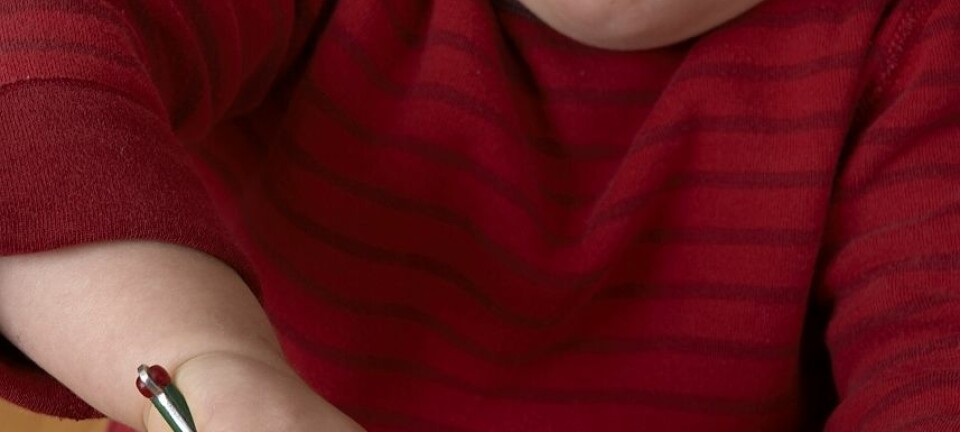This article was produced and financed by University of Bergen
In the hunt for obesity and diabetes genes
What roles do diets and genetics play in the development of obesity and diabetes?
Denne artikkelen er over ti år gammel og kan inneholde utdatert informasjon.
Professor Pål Rasmus Njølstad at Haukeland University Hospital, Norway, sees a future, in which, by a simple gene test, you can predict if your children are at risk of obesity. A future where there is a way of stopping those extra kilos piling on. In which case, you will also see a future with fewer cases of diabetes, cardiovascular disease and cancer.
Njølstad's goal is to find what genes, combined with environmental factors, cause six percent of the world’s pre-school children, or 44 million, to be overweight or obese.
“We know from previous research that infants with a high birth weight, and who experience weight increase in early childhood, are more at risk of becoming overweight or obese later in life than children of average weight,” says Njølstad about the theses underpinning his research.
“However, we do not know why this happens. I believe that genetic factors, combined with early childhood weight gain, play an essential part. Previously, we have found that diabetes genes may be associated with changes in birth weight.”

Obese children often become obese adults, underlining the case for treating obesity early in life. Today more than half the adult population of Europe is overweight or obese, according to numbers from the World Health Organization (WHO).
WHO’s numbers show that, world-wide, more people die of obesity than from hunger.
“If we know the mechanisms behind child obesity, it is easier to do something about the problem,” says Njølstad.
Norway’s unique archives
In the hunt for the obesity genes, the University of Bergen (UiB) researchers have a powerful tool in the Norwegian Mother and Child Cohort Study (MoBa), in which more than
90,000 pregnant women participated between 1999 and 2008. In the study, both biological samples and surveydata were collected as early as week 17 of pregnancy. More than 70,000 budding fathers also participated in the survey.

“Norway’s material is unique. While American studies can be socially selective, studies such as ours are based on a population with a much smaller degree of selection. The surveys are also carefully done,” says Njølstad.
From this extensive database, the researchers have picked 33,000 participants for further study: 11,000 children, 11,000 mothers, and 11,000 fathers.
The infants are divided into two groups. The first group consists of infants with high birth weight and high growth rate in the first year of life. The second group consists of infants with low birth weight and low growth rate in the first year of life.
The participants are then weighed again when they are five years old.
“By comparing genetic profiles of the two groups, we hope to find what genetic changes recur in the obese group and what sets them apart from the second group.”
“With information across generations, about both genes and environment, we can study what genes the child gets from the mother and what genes from the father, and if these have a different impact on the child,” says Head of UiB’s Department of Global Public Health and Primary Care, Professor Rolv Terje Lie.
Fat-busting medication
Lie is involved in the epigenetics work at UiB. Epigenetics is the study of heritable changes in gene activity that are not caused by changes in the DNA sequence. Or, in layman’s terms, how environmental factors impact on child obesity.
“To find what environmental factors have an impact on whether obesity genes are active or not; we want to study the whole trio of mother, father and child,” says Njølstad.
This way the researchers can examine whether conditions in pregnancy influence the child’s genetics or if the parents’ dietary habits influence the child’s food preferences.
If Njølstad and Lie’s research is successful, it is not inconceivable that the future will bring medication that can switch off the obesity genes.
“If we can prevent children, in particular those predisposed to obesity, from becoming overweight, this is not only cost-efficient for society, but also important for children, who will not suffer life as obese, with all the medical and social problems this may cause for them,” Njølstad points out.
Child, mother and father
Lie is responsible for the trio analysis in the project. Trio analysis is a term used to describe genetic studies where material is collected from mother, father and child.
“Trio analysis provides us with more reliable results than traditional case-control studies,” says Lie.
A case-control study is a type of observational study in which two existing groups differing in outcome are identified and compared on the basis of a supposed causal attribute.
Another advantage is that trio analysis enables the scientists to separate between different genetic mechanisms.
“In short, the result from trio analysis is both highly credible and may provide us with an entirely new type of knowledge,” Lie says.
Trio analysis is a complex research method, and combined with environmental factors and epigenetics brings new challenges.
International collaborations
No one has found a technical solution to use the full potential of trio analysis yet. New methods need to be developed.
“In order to do this, we need to work internationally to find the solutions,” says Rolv Terje Lie.
The researchers at the University of Bergen work closely with researchers from, amongst others, Lund University in Sweden and Boston’s Broad Institute, which grew out of research environments at Harvard and the Massachusetts Institute of Technology (MIT).



































